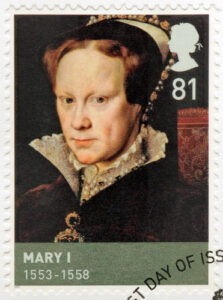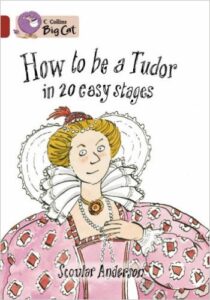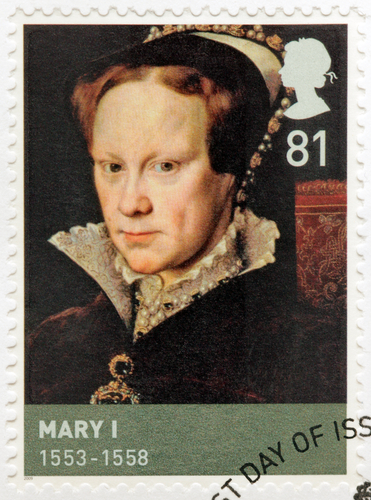This teaching activity is about reputations, what they are, how we can acquire one and how we can change or lose one. The 18th February marks the 500th anniversary of the birth of Mary I, the lesser known daughter of Henry VIII and sister of Elizabeth I. History today remembers her by the soubriquet – Bloody Mary, but is this a name – and a reputation, she deserves?

Activity One – What is a Reputation?
Suitable for Years 3 to 6
Learning Objectives:
To understand the meaning of the word ‘reputation’ and how it is acquired
To understand that reputations can be built on false information and therefore may not be true
Write the following sentences on the board:
- The England football team has a reputation for always losing in penalty shootouts
- Cadbury has a reputation for producing, arguably, the best milk chocolate
- A tiger has the reputation of being a ruthless killer
- Our school has a reputation for excellent SATS results
Ask the pupils what they think the word reputation means in the context of these sentences. Do they think the reputations are correct? How can they prove it?
Ask the pupils to look at the information on England’s penalty record in World Cup and European Championship matches.
From the information there, do they think the reputation is justified? Ask the pupils to write their answer and to say why they think so based on the evidence. Ask them to present their evidence to the class and identify whether the final decision is unanimous.
Activity Two – Personal Reputations
Suitable for Years 2 to 6
Learning Objective:
To be able to identify positive traits in themselves which could be used to define their reputation
To be able to define their reputation using the traits they identify
OK, we’ve now learned what reputation is, it’s time to think about our own reputation. Ask the pupils to remind you what a reputation is and they’ll say something you are known for, based on reinforcement or repetition of positive or negative traits.
Because we want to show all the pupils in a good light here, we’ll concentrate on reputations based on positive traits. Ask the pupils to think of what their good traits are and whether they demonstrate them repeatedly. i.e. scoring goals in football matches, getting all their spellings correct, always helping others when they are hurt etc. Ask them to list the traits and think of the ending to this sentence that encompasses all of the traits they have.
I have a reputation for being ……………
Now repeat the exercise, getting the rest of the class to list traits for each class member (anonymously). Once you have collected them, read them out and ask the class if the new list fits in with the reputation the pupil wrote for themselves (deserved or undeserved reputations). Finish by asking the pupils what they must do to keep their reputation and how they might lose it.
Activity Three – Investigation
Suitable for Years 3 to 6
Learning Objective:
To be able to research information, making notes
To be able to assess and use information to back up or refute arguments
OK, now we know what a reputation is and how you get one and lose one. Mary I was a queen who has gained a bad reputation over the course of history but does she deserve it? Tell the pupils the reputation that Mary had, that of having lots of deaths accredited to her and so gaining the name ‘Bloody Mary’.
Look at the facts:
- 283 protestant bishops were executed including being burnt at the stake. One had converted to Catholicism, Mary’s religion, but was still burnt.
- She executed Lady Jane Grey, a rival for the English crown
- Imprisoned her sister
- Had opponents executed for treason
- Said people could worship as they wished but then arrested, imprisoned or executed Protestants
- Both Elizabeth I and Henry VIII had more people executed than Mary
- People only disliked her because she was Catholic and the country had become protestant
- The biographers of the time were protestant and wrote negatively about her
- She married a Spanish king and so could have handed control of England to Spain
- People celebrated in the streets of London when she became queen
- People celebrated in the streets of London when she died
- She was said to have plotted against her brother Edward VI whilst he was king
Now ask the pupils to work in groups of three to sort the facts into ones that show she deserved her reputation and ones that refute it. From their sorting, ask them to decide on whether she deserved her reputation, choosing the three strongest reasons which back up their decision. Ask them also to choose the two strongest which refute their decision. Once everyone has completed this part of the task, ask them to present their decision and reasons to the class and afterwards, find out if the class agrees with it based on the evidence they have presented.
Ever wondered what it was like to be a Tudor? In How To Be a Tudor in 20 Easy Stages, readers will discover all about the Tudor monarchs, homes, food and much more.



